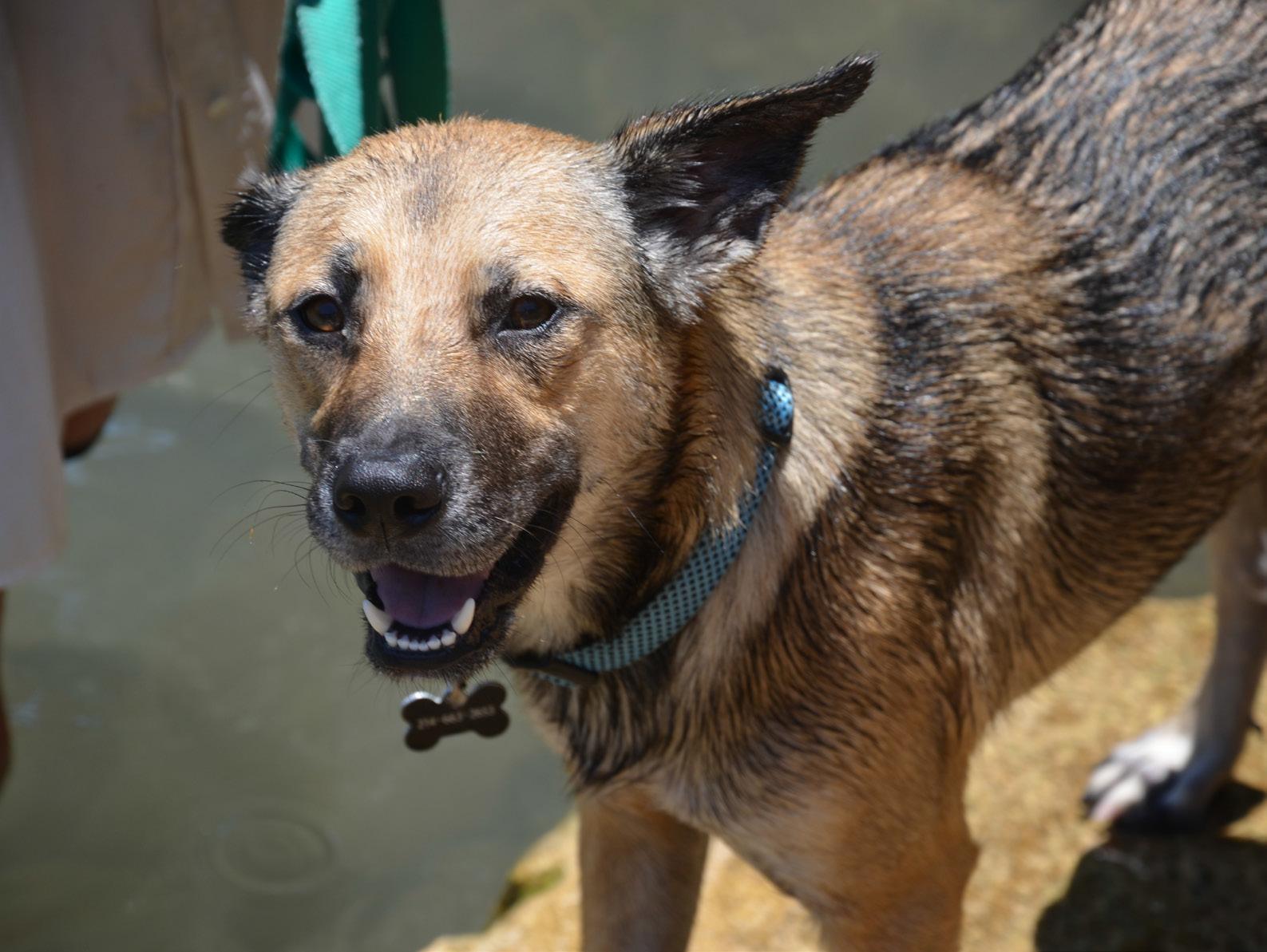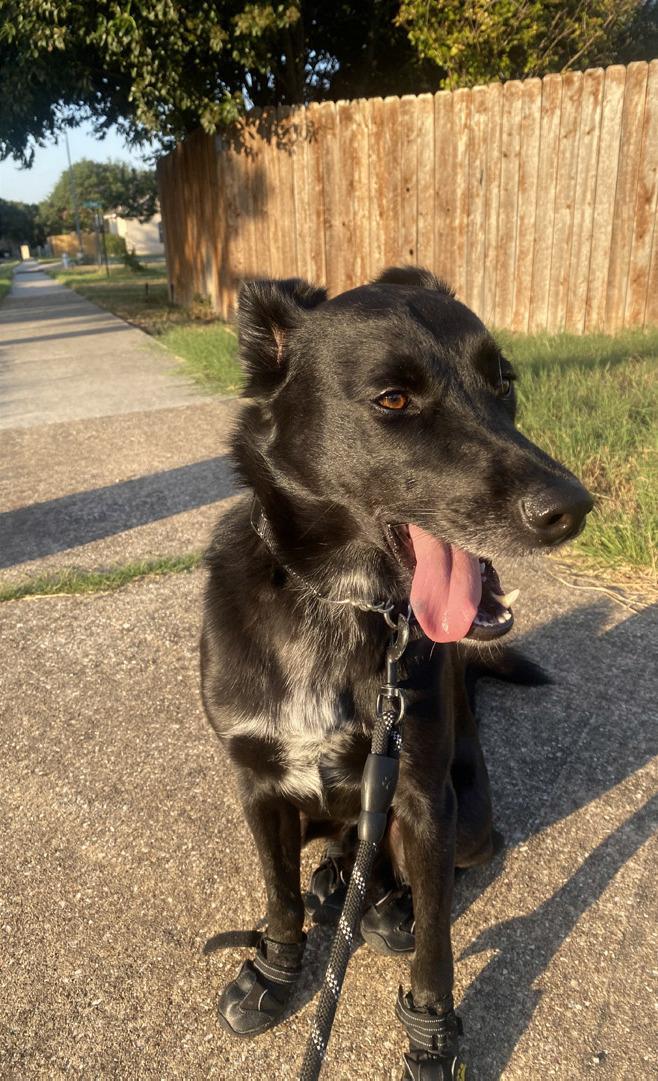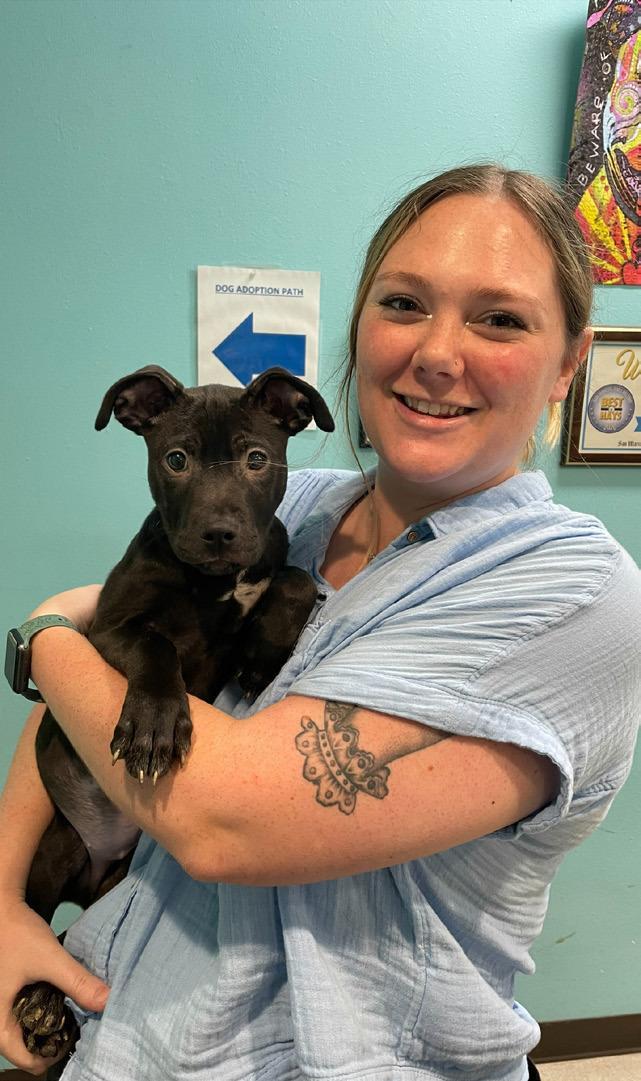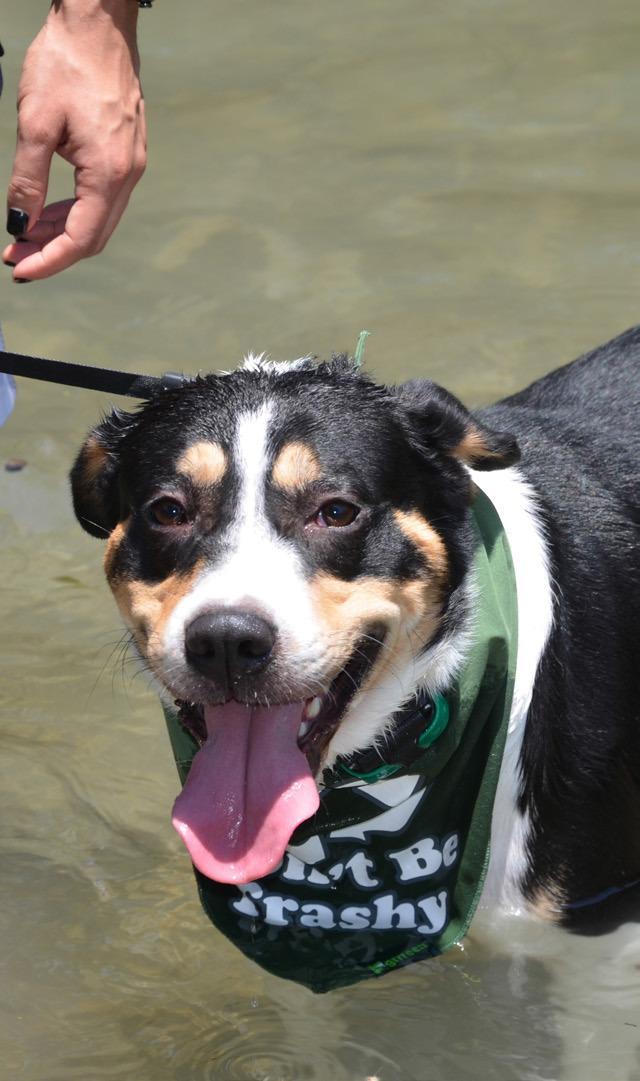



Top, Scout is a happy boy because he just took a dip in the river to stay cool. Bottom left, Angus wears booties to protect him from the hot pavement on his nightly walk. Bottom middle, San Marcos Animal Shelter Community Engagement Coordinator Minnie Buckhaults and one of the shelter's adoptable pets Celeste Bottom right, Shy keeps cool in the river.
Photos by Shannon West & Alex McKay. Bottom center photo submitted.
HOT DOGS
Helping man's best friend beat the heat
Humans are not the only ones suffering in this outrageous heatwave– pets are at a high risk for heat stroke.
San Marcos Animal Shelter is offering tips on how to spot, prevent and treat one.
The shelter’s Community Engagement Coordinator Minnie Buckhaults said there is one situation to avoid completely to keep your dog safe.
“Never leave your dog, cat or any pet in a vehicle even with the windows cracked,” Buckhaults said. “People often think that they’re just going in for 10 minutes, but that can cause heat stroke so quickly because the temperature of a car can quickly get to 120 degrees with the windows cracked.”
Buckhaults said there are many ways to prevent pets from overheating.
”Make sure, if possible, they be kept indoors,” Buckhaults said. “A doggy house outdoors can still be really hot for them even if there is shade provided. If they are outside, or inside as well, make sure they have access to plenty of water - make sure you’re changing that out a couple of times a day.”
Buckhaults said there are also preferred times of day for dog walking. “Walking them early in the morning or late at night. A lot of people don’t realize that sidewalks and pavement can get extremely hot and can burn the paw pads of your dog’s skin. If you have a sidewalk in your backyard and your dog lays on it, it can even burn them,” Buckhaults said. “Walking them through the grass instead of on those pavement areas can also help.”
Buckhaults said to monitor your pet throughout the day, always remembering that there are several signs of heat distress and stroke to look for during this heatwave.
“Excessive panting can be an early sign of heat stroke,” Buckhaults said. “Excessive drooling, difficulty breathing–it can progress into vomiting or diarrhea with or without blood and weakness. Stumbling and sudden collapse.”
Buckhaults said if one notices any of these signs, to seek veterinary help immediately.
“Once your pet begins to overheat, it progresses extremely quickly,” Buckhaults said.
There are specific breeds that are more prone to heat exhaustion. Buckhaults said this is because they have difficulty eliminating heat with panting.
“Those are overweight pets, elderly pets, any dogs or cats with lung or heart disease, dogs with thicker coats and any brachycephalic breeds like pugs or anything with a smushed-in face,” Buckhaults said.
If a pet appears to be overheating or showing any of the signs of heat exhaustion, she offered recommendations.
“Always offer cool but not cold water. You never want to offer a dog going into a heat stroke cold water, so nothing with ice or anything,” Buckhaults said. “You can also cool them down with wet towels, but do not place them into cold water or put cold water on them as it can be super dangerous with blood pressure changes.”
Even by taking precautionary measures, should one notice signs of a heatstroke, Buckhaults said it is important to reach out to a veterinarian quickly.
“There are several [vets] throughout San Marcos that may be able to tell you if it has progressed to a point where you need to bring them in or if you just need to bring them inside and let them cool off and check back with them in a few minutes. The best thing to do is seek veterinary care if you think your dog is having signs of a heat stroke,” Buckhaults said.
Buckhaults added that cats are able to handle higher temperatures than dogs. However, they can still have a heat stroke and the protocol would be the same.
“[The signs are] pretty much the same as with dogs. They’ll go into excessive panting, drooling, difficulty breathing, so I wouldn’t say that there’s major differences between dogs and cats,” Buckhaults said.











